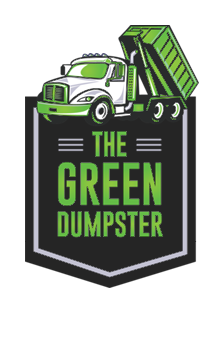DumpsterRentalsFAQ's
-
- Give us a call (818) 355-9597 or book online!
- Let us know what type of trash removal project you have, i.e small garage clean out, bathroom remodel to major demolition.
- Determine what size dumpster you need. (We have 3 yard to 40 yard containers), we have over 6 different size dumpster rentals to choose from.
- Set up your drop off time, date and location. At Budget Bins we work around your busy schedule. Let us know what time window works for you.
Done! Most our orders over the phone are set up and finalized within a few minutes. Online orders are even faster! You can even rent a bin from our contact us form or email us @ budgetbinsllc@gmail.com. We will be sure to get back to you within 1 hr or less!
You cannot put just anything in your bin. There are limitations as far as weight and hazardous material, and you have to make sure you get the right bin for the right job. If you’re getting rid of furniture, doors or large quantities of trash, you should order at least a 25-yard bin. You could use a 10-yard bin, but the walls of the bin are only 2 feet high, so you run the risk of piling the trash too high, and we cannot safely pick up any bin that is overloaded.What materials are considered hazardous? How can I properly dispose of them? The following materials are hazardous: asbestos, treated wood (telephone poles and railroad ties), oil, paint, chemicals, propane tanks, batteries, fluorescent bulbs, etc. If you have paint cans where the paint is totally dry, then it is not hazardous. Tires are not hazardous, but they pose a problem at the landfill, so we charge an extra $15 per tire. See below for a complete list
- Miscellaneous
- Fluorescent lights
- Mercury thermometers
- Photographic chemicals
- Lighter fluid
- Shoe polish
- Fiberglass epoxy
- Swimming pool chemicals
- Moth balls
- Glue
- Beauty Products
- Medicine
- Alcohol-based lotions
- Isopropyl alcohol
- Nail polish remover
- Hair relaxers
- Hair dyes and permanents
- Products in aerosol cans
- Paint Products
- Latex/water-based paint
- Oil-based paint
- Turpentine paint stripper
- Rust remover
- Paint thinner
- Varnish
- Household Cleaners
- Ammonia-based cleaners
- Oven and drain cleaners
- Floor care products
- Aerosol cleaners
- Window cleaners
- Furniture polish
- Metal polishes and cleaners
- Tub, tile and toilet bowl cleaners
- Mercury batteries
- Automotive Fluids and Batteries
- Used motor oil and filters
- Gasoline and diesel fuel
- Kerosene
- Lawn/Garden
- Care Products
- Bug spray
- Fertilizer
- Pesticide/insecticide
- Fungicide
- Herbicide
- Weed killer
- Auto body repair products
- Windshield washer solution
- Antifreeze
- Brake and transmission fluid
- Lead acid batteries
- Metal polish with solvent
As of January 2006, railroad ties need certification from a laboratory that they are California Non-Hazardous Material, and need to be manifested. One lab that can perform the required tests is American Analytics in Chatsworth (818) 998-5547.
There are 2 tests:
1- “8270” tests for levels of pentachlorophenol as well as other organic compounds and costs $225.
2- “ CAM metals” test looks for certain hazardous metals and costs $105. Telephone poles are exempt from having to be tested until January 2007. They are accepted at class 3 landfills as long as the material is manifested.
What is considered inert?
Inert material includes dirt, concrete, rocks, sand, stucco, tile, bricks, blocks, asphalt, re bar, metal, etc.
What is considered non-inert?
Non-inert material includes grass, roots (bigger than you finger), sod, trash, drywall, wood, stucco with paper, asphalt shingles, plastic, green waste, etc.
Never fill a bin higher than the side-walls. For 3-yard containers, the trash must be filled level with the top.
Included tonnage will vary by dumpster size, we always recommend calling and speaking to one of our helpful dumpster rentals pros to determine the right size dumpster for your project. Call us at 818-355-9597
Water weighs 8 lbs per gallon, so if we had a monsoon in California and your bin had 200 gallons of rain water inside,it would be less than a ton (~1600 lbs.)
There is no easy way to determine that. For dirt and concrete, one cubic yard weighs approximately one ton, so a 10-yard container weighs approximately 10 tons when loaded with inert material.
Click on the link to watch dumpster door operation video. How to open and close the roll off dumpster doors
